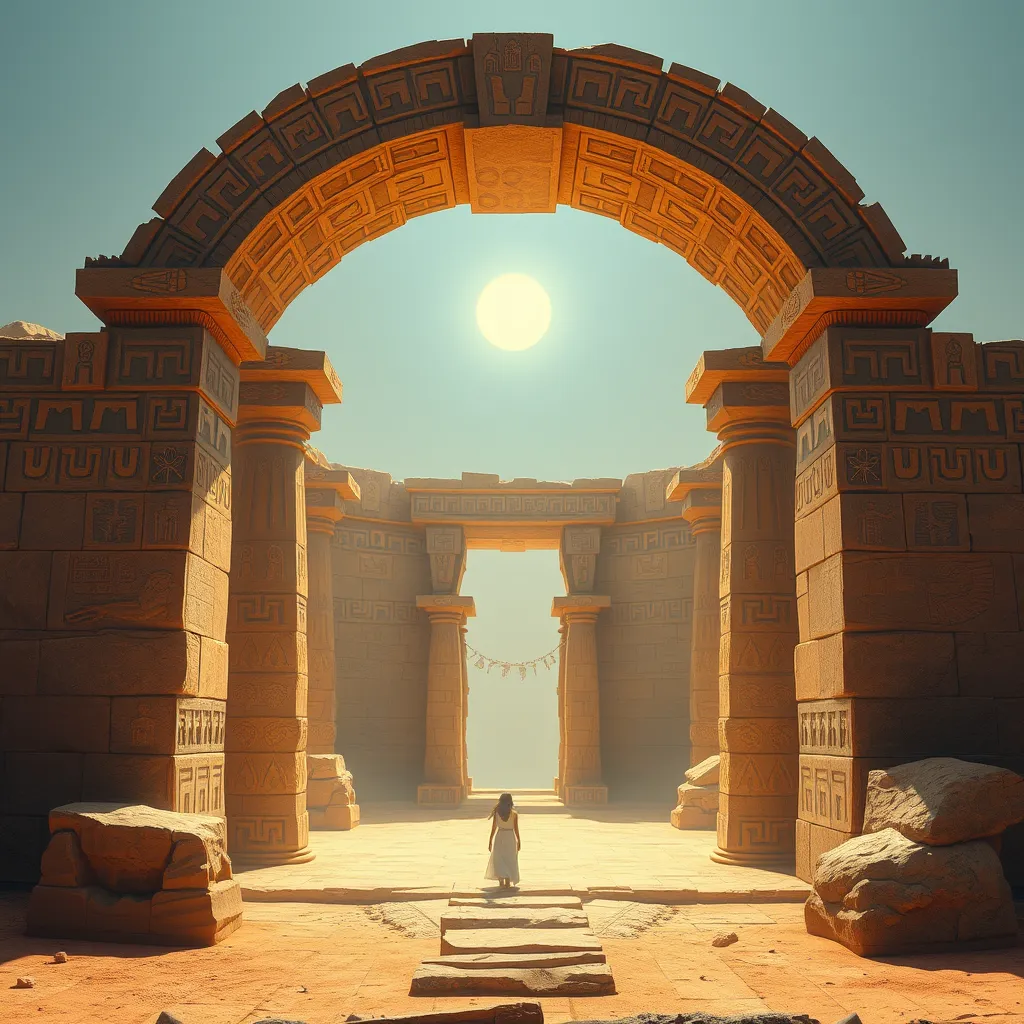The Duat: A Window into the Soul
I. Introduction to the Duat
The Duat, often referred to as the realm of the afterlife in ancient Egyptian belief, holds a significant place in the understanding of the soul’s journey. This mystical landscape, shrouded in mythology and symbolism, was believed to be the destination for souls after death, serving as a vital component in the ancient Egyptians’ complex views on life, death, and the afterlife.
The significance of the Duat goes beyond merely being an afterlife destination; it represents a transformative journey that the soul must undertake. Understanding the Duat allows us to delve into the ancient Egyptian conception of the soul and its fate post-mortem.
II. The Mythological Framework of the Duat
The origins of the Duat are deeply rooted in Egyptian mythology, which encompasses a rich tapestry of gods, goddesses, and mythical stories. The Duat is often depicted as a dark, chaotic realm, filled with challenges and trials that the deceased must navigate.
Key deities associated with the Duat play crucial roles in the soul’s journey. Among these are:
- Osiris: The god of the afterlife, resurrection, and fertility, Osiris governs the Duat and is central to the judgment of souls.
- Isis: The goddess of magic and motherhood, she aids souls in navigating the challenges of the Duat.
- Thoth: The god of wisdom and writing, Thoth records the outcomes of the souls’ judgments.
Osiris’ role is particularly significant as he presides over the judgment of souls, determining their fate based on their earthly deeds.
III. Geography and Structure of the Duat
The landscape of the Duat is rich in symbolism, often depicted as a series of regions and levels that reflect the challenges faced by souls. The geographical structure could be imagined as a vast underworld, filled with rivers, deserts, and labyrinthine pathways, each carrying its own meaning.
Some notable features of the Duat include:
- The Field of Reeds: A paradise for the worthy, akin to the earthly realm but more beautiful and eternal.
- The Lake of Fire: A terrifying place where the unworthy face punishment.
- The Serpent Apep: The embodiment of chaos that souls must confront.
Pathways through the Duat are fraught with challenges, including encounters with mythical creatures and navigating through darkness, symbolizing the trials of life and the struggle for enlightenment.
IV. The Journey Through the Duat
The journey through the Duat is marked by several stages that the soul must pass after death. Each stage presents unique challenges and trials, reflecting the soul’s moral and ethical conduct during life.
One of the most critical moments in this journey is the “Weighing of the Heart” ceremony. In this ceremony, the heart of the deceased is weighed against the feather of Ma’at, the goddess of truth and justice. The outcomes can lead to:
- A successful passage to the Field of Reeds for the virtuous.
- A fate of annihilation for the unworthy, where the heart is devoured by the monstrous Ammit.
In navigating the Duat, spells and rituals play an essential role. The ancient Egyptians believed that specific spells could guide the deceased through various obstacles, ensuring a safe passage to the afterlife.
V. Symbolism of the Duat in Ancient Egyptian Culture
The Duat’s significance is reflected in ancient Egyptian culture through various artistic expressions. Artwork and inscriptions often depict the Duat’s landscapes, the trials souls face, and the gods who govern these realms.
Moreover, the Duat heavily influenced funerary practices and tomb design. Tombs were often constructed to mirror the journey through the Duat, filled with spells and artwork to aid the deceased in their passage. Key elements include:
- Hieroglyphs detailing the soul’s journey.
- Images of gods and protective figures.
- Canopic jars containing the organs, necessary for the afterlife.
The Duat also finds representation in literature and religious texts, where it serves as a backdrop for many stories about gods, the afterlife, and the soul’s journey.
VI. The Duat and the Concept of the Soul
In understanding the Duat, it is crucial to explore the ancient Egyptian conception of the soul, which comprises several components: the Ba, Ka, and Akh. Each aspect plays a distinct role in the life and afterlife of an individual.
- Ba: The personality or individual essence that lives on after death.
- Ka: The life force that sustains the individual, requiring sustenance in the afterlife.
- Akh: The transformed spirit that achieves immortality and enlightenment.
The Duat reflects the belief in the soul’s immortality, emphasizing that the journey through this realm is not just a passage to another life but also a process of self-discovery and transformation.
VII. The Legacy of the Duat in Modern Context
The legacy of the Duat extends beyond ancient Egypt, influencing contemporary spirituality and esoteric practices. Many modern spiritual movements draw on the themes of the Duat, emphasizing the journey of the soul and the quest for enlightenment.
In popular culture, the Duat has also found its place in various media, from literature to films, where it is often portrayed as a mystical realm filled with adventure and challenges. Notable examples include:
- Films that explore ancient mythology.
- Books that feature themes of death and rebirth.
- Video games that incorporate mythological journeys.
Ongoing academic studies continue to shed light on the Duat, exploring its meanings, representations, and the ways it reflects ancient Egyptian beliefs about death and the afterlife.
VIII. Conclusion
In summary, the Duat serves as a profound window into the soul, revealing the complexities of ancient Egyptian beliefs about life, death, and the afterlife. Its significance is not just historical but continues to resonate in modern spirituality and cultural expressions.
As we reflect on the Duat, we are encouraged to explore further the rich tapestry of ancient Egyptian beliefs and their relevance in our understanding of existence and the human experience.




